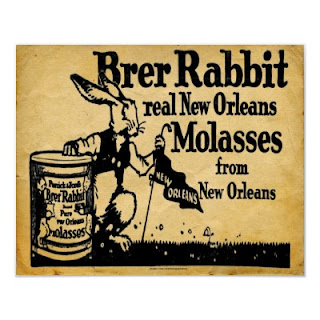The preservation of western cultural and the American Cowboy. Sharing the history of the early trail drives, the Chuck Wagon and those who pioneered untamed land. The content is for educational and entertainment purposes. Cowboys and Chuck Wagon Cooking reviews cooking techniques, products and western gear which today is part of western life style. We hope you will enjoy your visit and look forward to comments, recipes and shared heritage. Thank you for your visit. Hope you follow us along the trail of news, stories and the Cowboy way. United States Copyright 2009 - 2021 under title 17 of the U.S. Copyright Code.






 Today, the Brer Rabbit label continues sales
through B&G Foods, Inc who purchased the name from Nabisco, Inc in
1997. Although the roots long begin before the 20th century with
Penford Corporation of 1896 that moved to Harvey, Louisiana. The
monopoly of Corn Products Refining Company (CPR) acquired 25 percent
interest in Penick molasses and corn syrup trade.
Today, the Brer Rabbit label continues sales
through B&G Foods, Inc who purchased the name from Nabisco, Inc in
1997. Although the roots long begin before the 20th century with
Penford Corporation of 1896 that moved to Harvey, Louisiana. The
monopoly of Corn Products Refining Company (CPR) acquired 25 percent
interest in Penick molasses and corn syrup trade. 

I have never heard of Brer Rabbit mollasses. Will have to try to locate!
ReplyDeletewhen I was small rabbit mollasses was all we used.I tell my grown children about the molasses, they don't know what I'm talking about.
ReplyDeleteEver since we were young, 4 Brothers our mom would serve us the Blue labels the when we grew it disappear But now I continue to buy it when we enter I Hop, I take it with me.
ReplyDeleteI would to know if there's a jacket with the decal of the Brer Rabbit on the Back, I certainly would purchase it. Thank you.
ReplyDeleteBrer Rabbit is part of B&G Foods. You can view all of their products at www.bgfoods.com
DeleteBrer Rabbit molasses, I was told by a great grandmother type of lady at the market today that you couldn't find Brer Rabbit molasses anymore. My heart sunk and I went into a panic attack. WHAT? The only Molasses my mother would ever get for making Molasses cookies. I am relieved to note however; it is still around and can be purchased. Heck, if I wanted a sugar high , I would take a spoonful of this stuff as a kid. The cookies it made were very strong, very spicy. I am so relieved the company is still around. The molasses the lady was buying was Grandmothers Molasses. Anyone else have fond nostalgic memories of this?
ReplyDelete